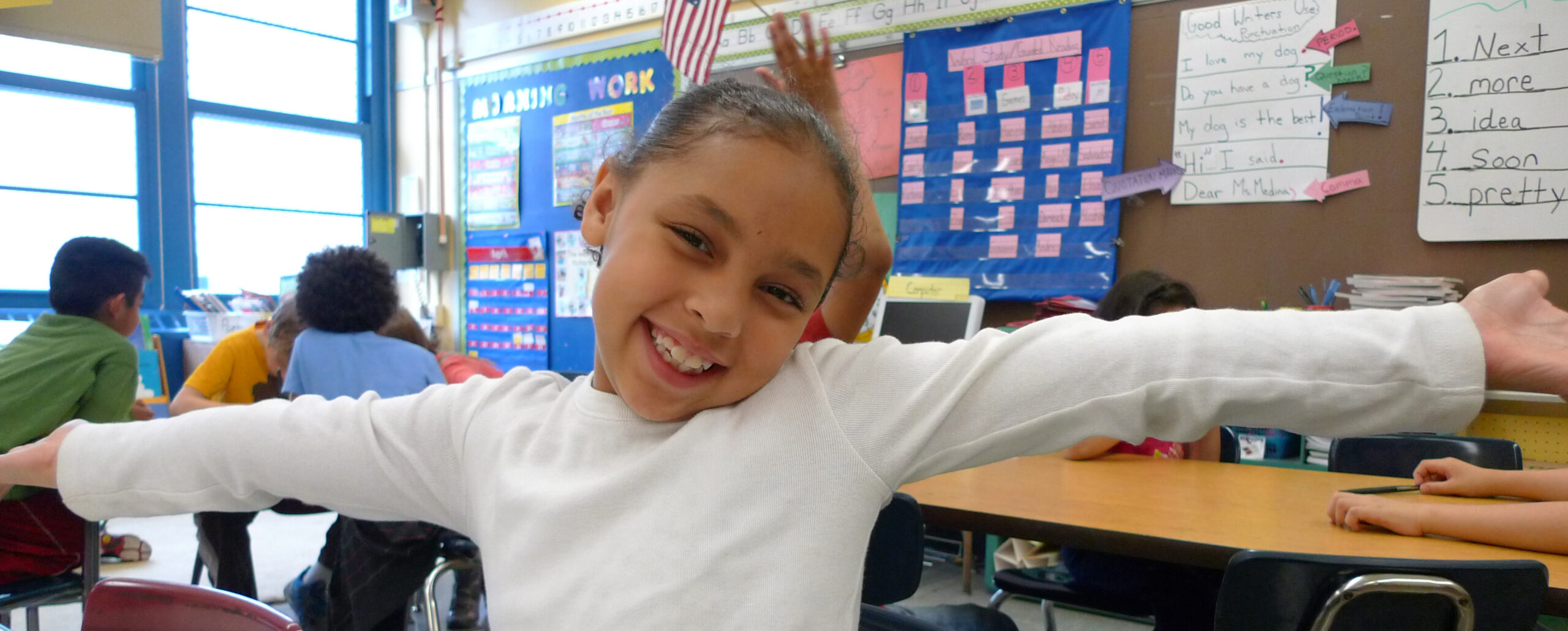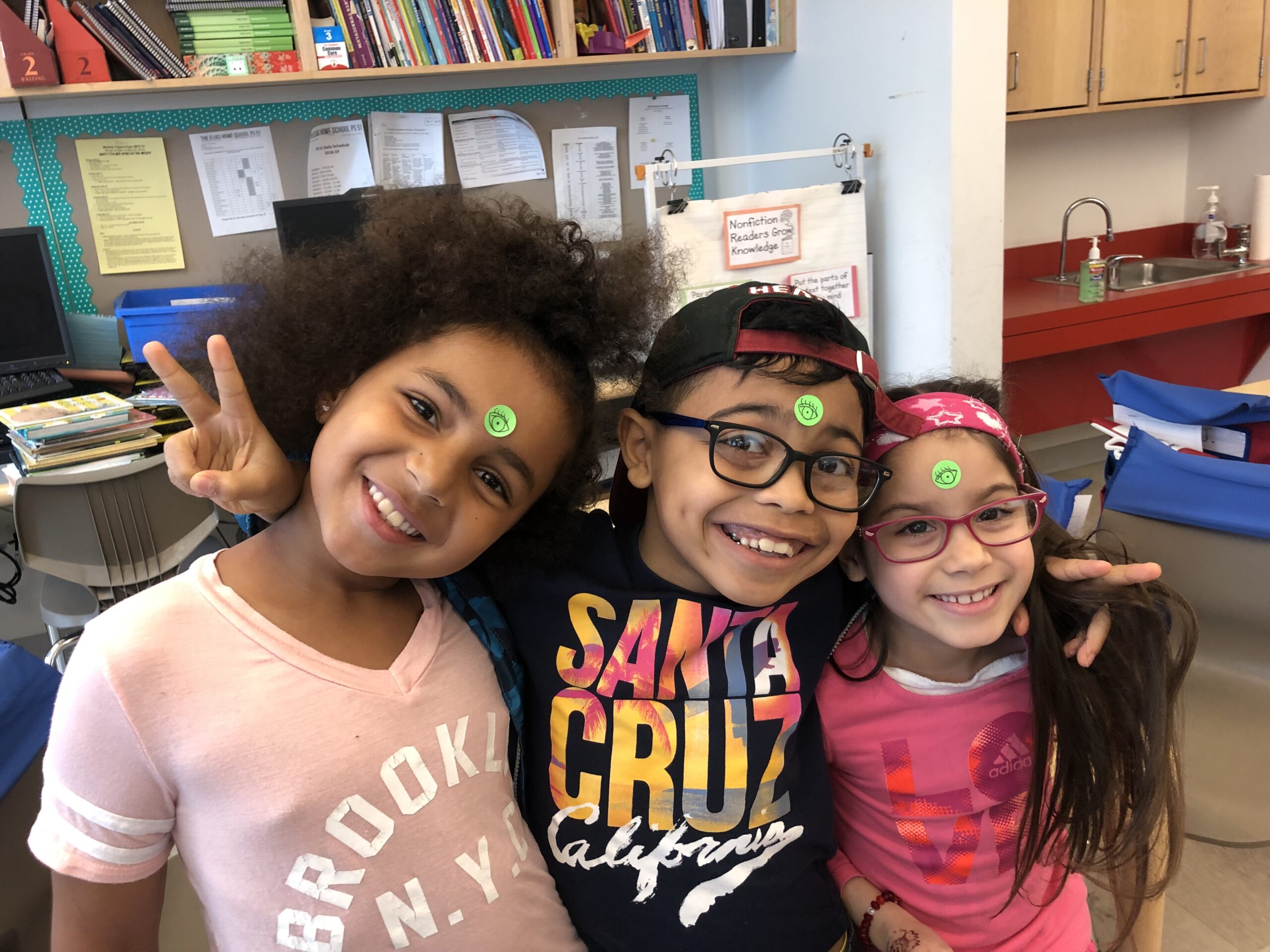In the second part of his Arts of Speech lesson plan, Matthew Baganz shows students how words can create and communicate visual images. Read Part 1 of the lesson plan here.
Lesson Overview
Grade: 3–5
Genre: Descriptive prose
Download: The Arts of Speech Part 2: Recreating Pictures with Words
Common Core Standard:
- ELA-Literacy.W.3-5.3
Write narratives to develop real or imagined experiences or events using effective technique, descriptive details, and clear event sequences.
Lesson Objectives:
Students will:
- Write a descriptive piece with a focus on using specific parts of speech to produce vivid imagery.
- Peer-review text samples and discuss effective and ineffective approaches to writing descriptive pieces with imagery.
Guiding Questions:
- How can writers use their words to create images as colorful as those painted by artists?
- What kinds of words produce the most vivid imagery in a piece of writing?
- How much detail is needed to paint a specific picture with words?
Warm-Up (10 minutes):
- Remind students of the previous lesson on the parts of speech and their different roles in conveying meaning and forming mental images in the minds of readers.
- Provide the class with a picture (a handout or displayed on the board) and challenge students to capture as much of the image as they can in two sentences. When finished, students may color-code the parts of speech they included (noun/red, adjective/yellow, verb/green, adverb/blue), or they may simply tally them up to save time.
- Invite students to share their sentences and facilitate a discussion about why certain sentences might capture the picture better than others, focusing on parts of speech and the role they play in creating imagery.
Mentor Text and Image Selection (5 minutes):
- Organize students into pairs and instruct them to choose a new picture to write about. Their goal is to compose a piece that captures the details of an image so well that a reader can reproduce the original picture just by reading their text.
- Partners must choose different pictures, from the Internet, a book, or any other resources available.
Writing (10 minutes):
- Students take ten minutes to describe their pictures with detail and imagery, keeping in mind the functions of the different parts of speech and how they work together to create images.
Reading and Sketching (15 minutes):
- Partners trade their written pieces with one another and read the text carefully. They then sketch an illustration of the picture they read about, ensuring that they include all of the details in their pictures that are provided in the text.
- Partners then reveal their original pictures and compare them to the illustrations of their peers. Students discuss how effective the writing was in recreating an image and what techniques, strategies, or word choices might have improved the imagery in the writing.
Closing (10 minutes):
- Invite students to post their writing around the classroom, in between the original image and their partner’s illustration. Facilitate a whole class discussion about what writing techniques were successful or not as successful in recreating a picture with words.
- Closing questions might include the following:
- Was there a trend in the usage of specific parts of speech in the more successful descriptive writing pieces?
- What other kinds of words made some of the pieces effectively “paint a picture”?
- What kinds of words might have been missing in the sentences that fell short of forming images in the minds of readers?
- Does a greater word count necessarily mean better description?
Materials:
- Resources with pictures (books, magazines, computers, etc.)
- Paper and writing utensils
Multimodal Approaches to Learning: Verbal-Linguistic, Interpersonal, Intrapersonal
Matthew Baganz holds a bachelors degree in creative writing and a masters degree in multicultural education. Matthew has been teaching for 13 years, and he also works on educational marketing projects and is the PYP Maths coordinator at Strothoff International School in Dreieich, Germany.



